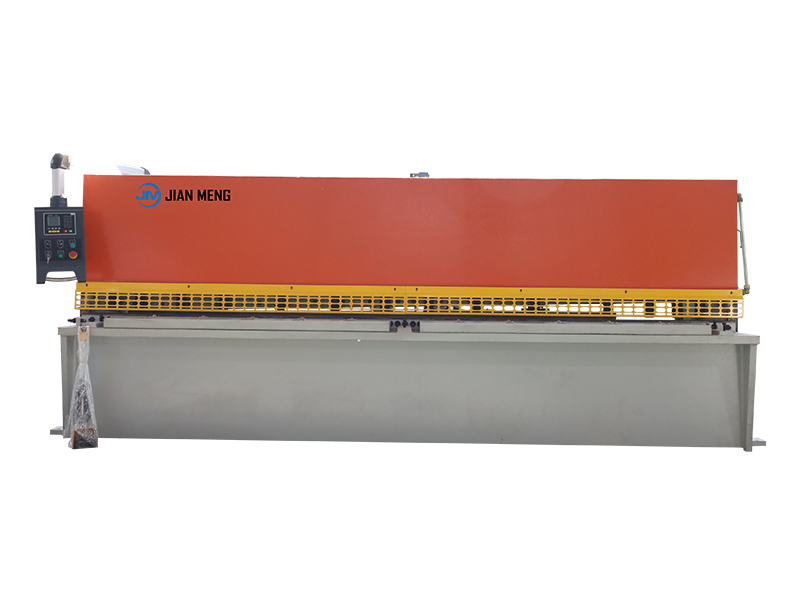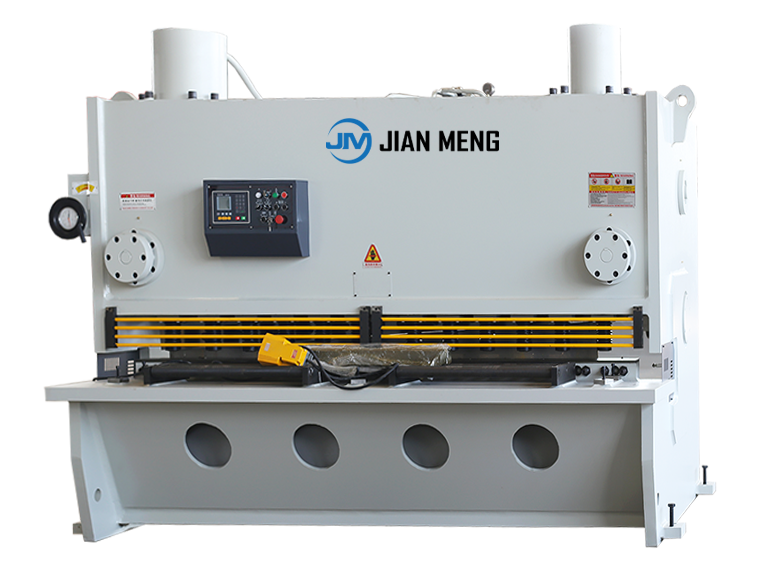Selecting a press brake— the core tool for sheet metal bending—requires aligning the machine’s technical capabilities with your material specifications, production demands, and quality requirements. The wrong press brake can lead to inconsistent bends, increased scrap rates, and wasted operational costs, while the right one enhances precision, throughput, and long-term profitability. This guide provides a structured, technical framework for evaluating press brake types, key selection criteria, and critical features to ensure your choice meets both immediate and future manufacturing needs.
1. Foundational: Understand Press Brake Types & Their Technical Tradeoffs
Press brakes are categorized by their drive system, each optimized for specific tonnage, material thickness, and production volumes. Below is a detailed comparison of the three primary types, including their technical strengths, limitations, and ideal use cases:
| Press Brake Type | Core Drive Mechanism | Key Technical Specs | Ideal Applications | Pros & Cons |
|-------------------------|---------------------------------------------------------------------------------------|-------------------------------------------------------------------------------------|-------------------------------------------------------------------------------------|-----------------------------------------------------------------------------|
| Hydraulic
Press Brakes | Dual hydraulic cylinders (powered by hydraulic fluid, 10–30 MPa pressure) driving a ram. | - Tonnage: 50–5,000 kN<br>- Bend length: 1–6 m<br>- Accuracy: ±0.05 mm (with CNC)<br>- Material capacity: 3–25 mm (steel), 5–30 mm (aluminum) | Heavy-duty bending (e.g., structural steel, automotive chassis components, thick-gauge stainless steel). | Pros: High tonnage, handles thick/hard metals, durable. <br>Cons: Higher energy use, requires hydraulic fluid maintenance, slower cycle times vs. electric. |
| Servo-Electric Press Brakes | Precision servo motors (1–5 kW) + ball screws/gears to drive the ram (no hydraulic fluid). | - Tonnage: 10–300 kN<br>- Bend length: 0.5–3 m<br>- Accuracy: ±0.02 mm (with CNC)<br>- Material capacity: 0.5–6 mm (steel), 1–10 mm (aluminum) | Light-to-medium bending (e.g., electronics enclosures, HVAC ductwork, thin-gauge automotive trim). | Pros: Energy-efficient (70% less than hydraulic), low maintenance, fast cycle times, quiet operation. <br>Cons: Limited tonnage (not for thick metals), higher upfront cost vs. basic hydraulic models. |
| CNC Automatic Press Brakes | Hydraulic or servo-electric drive + integrated CNC control (3–6 axes) + automated tool changers/part loaders. | - Tonnage: 50–2,000 kN<br>- Bend length: 1–4 m<br>- Accuracy: ±0.03 mm<br>- Throughput: 50–200 parts/hour (with automation) | High-volume, complex bending (e.g., aerospace parts, medical device components, mass-produced consumer goods). | Pros: Fully automated, consistent for complex multi-bend parts, reduces labor. <br>Cons: Highest upfront cost, requires CNC programming expertise, overkill for simple/low-volume tasks. |
2. Critical Selection Criteria: Align Machine to Your Workflow
To narrow down options, evaluate these non-negotiable factors—they directly determine whether a press brake will integrate seamlessly into your operations:
2.1 Material & Thickness Requirements
The press brake’s tonnage (force capacity) and ram stroke must match your material’s strength and thickness. Use this technical rule of thumb:
- Tonnage Calculation: Tonnage = (Material Thickness [mm] × Material Strength [MPa] × Bend Length [m]) / 1,000
- Example: Bending 6 mm thick steel (strength = 450 MPa) over a 2 m length requires ~540 kN (54 tons)—a hydraulic press brake is necessary (servo-electric max out at 300 kN).
- Material Hardness: Hard metals (e.g., stainless steel 316, titanium) require higher tonnage than soft metals (e.g., aluminum 6061). Avoid servo-electric models for metals with tensile strength >600 MPa.
2.2 Production Volume & Throughput
- Low Volume (<100 parts/day): A manual or semi-automatic hydraulic/servo-electric press brake (without full CNC) suffices. Prioritize ease of use over automation.
- Medium Volume (100–500 parts/day): A CNC servo-electric or hydraulic press brake with programmable recipes (to save bend settings) balances speed and cost.
- High Volume (>500 parts/day): A CNC automatic press brake with automated part loading/unloading (robotic arms, conveyors) and tool changers is critical to avoid bottlenecks.
2.3 Bend Complexity & Precision
- Simple Bends (90° angles, 1–2 bends/part): A basic CNC (2–3 axes) or even manual hydraulic press brake works. Precision requirements here are often ±0.1 mm.
- Complex Bends (multi-axis, nested bends, tight radii): A 5–6 axis CNC press brake is mandatory. Look for features like:
- Backgauge Accuracy: ±0.02 mm (positions the sheet metal for repeatable bends).
- Ram Parallelism Control: Automatically adjusts ram tilt to prevent uneven bending (critical for long parts >2 m).
- Virtual Bending Simulation: CNC software (e.g., Delem DA-66T, Trumpf TruBend) that previews bends to avoid collisions and scrap.
2.4 Operational Costs & Total Cost of Ownership (TCO)
Upfront cost is only one component—TCO includes long-term expenses:
- Energy Costs: Servo-electric models cost ~$0.50/hour to operate, vs. $1.50–$2.00/hour for hydraulic (based on 24/7 operation).
- Maintenance Costs:
- Hydraulic: $500–$1,500/year (fluid changes, seal replacements, filter maintenance).
- Servo-Electric: $100–$300/year (lubricating ball screws, motor inspections).
- Consumables: Hydraulic models require periodic fluid top-ups; servo-electric models have no consumables beyond tooling.
3. Must-Have Features for Modern Press Brakes
Beyond core specs, these features enhance safety, precision, and usability—prioritize them to avoid costly upgrades later:
3.1 CNC Control System
A robust CNC is non-negotiable for precision (even for low-volume shops). Look for:
- Axis Count: 3 axes (X: backgauge, Y: ram position, Z: crowning) for basic bends; 5–6 axes (adds R: backgauge rotation, U/V: side gauges) for complex parts.
- Software Capabilities:
- Import of CAD files (DXF/DWG) to auto-generate bend programs (saves programming time).
- Crowning compensation (automatically adjusts ram curvature to counteract sheet metal springback—critical for long parts >1.5 m).
- Error detection (alerts for over-tonnage, tool collisions, or incorrect material settings).
3.2 Safety Features (Compliant with OSHA/EN Standards)
Press brakes pose severe injury risks—ensure compliance with OSHA 1910.217 (U.S.) or EN ISO 13849 (EU):
- Light Curtains: Photoelectric sensors that stop the ram if an operator’s hand enters the bending area (minimum safety distance: 150 mm from the die).
- Emergency Stop (E-Stop): Hardwired, red mushroom buttons (accessible from all machine sides) that cut power instantly.
- Crowd Control Guards: Physical barriers for the ram/die area (required for manual loading/unloading).
- Two-Hand Control: Requires both hands to activate the ram (prevents one-hand operation while the other is in the danger zone).
3.3 Tooling Compatibility & Flexibility
Press brake tooling (punches and dies) determines the types of bends you can create. Ensure the machine supports:
- Standard Tooling: ISO 9001-certified punches (V-die, acute-angle, radius) and dies (matched to material thickness—e.g., a 6 mm V-die for 1–3 mm steel).
- Quick-Change Tooling: Systems (e.g., Wila, Wilson Tool) that allow tool changes in <5 minutes (critical for high-mix production).
- Custom Tooling: Ability to integrate specialty dies (e.g., hemming dies for automotive panels, offset dies for box corners) if your parts require unique bends.
3.4 Ergonomics & Space Requirements
- Footprint: Ensure the machine fits in your shop:
- Small servo-electric: ~1.5 m (W) × 2 m (D) × 2 m (H).
- Large hydraulic: ~3 m (W) × 4 m (D) × 3 m (H).
- Operator Access: Ram height and backgauge position should allow comfortable loading (elbow-height ideal) to reduce fatigue.
- Noise Level: Servo-electric models operate at <70 dB (quiet enough for open shops); hydraulic models may require sound dampening (>85 dB).
4. Final Steps to Validate Your Choice
Before purchasing, take these actions to avoid costly mistakes:
1. Request a Test Bend: Provide the manufacturer with a sample of your thickest/most complex part. Ask them to demonstrate:
- Repeatability (bend 5–10 samples and measure for consistency).
- Cycle time (how long it takes to complete one part).
- Springback compensation (does the machine adjust to ensure the final bend angle matches your requirement?).
2. Evaluate Manufacturer Support:
- Warranty: Minimum 1-year parts/labor warranty; 2–3 years for servo motors/hydraulic cylinders.
- Service & Training: Ensure local service technicians are available (downtime for a press brake costs $1,000–$5,000/day). Ask for free operator/CNC programming training.
- Spare Parts: Check if critical parts (e.g., hydraulic seals, servo motor belts) are in stock locally.
3. Review User Feedback:
- Look for reviews from users with similar applications (e.g., “hydraulic press brake for 10 mm steel” vs. “servo-electric for electronics”).
- Ask the manufacturer for customer references—call them to ask about reliability, maintenance issues, and post-purchase support.


 English
English  中文
中文  Arabic
Arabic  Russian
Russian  Spanish
Spanish  Portuguese
Portuguese  French
French  German
German  Hindi
Hindi  Thai
Thai  Vietnamese
Vietnamese  Khmer
Khmer  Italian
Italian  Turkish
Turkish  Korean
Korean  Belarusian
Belarusian 


